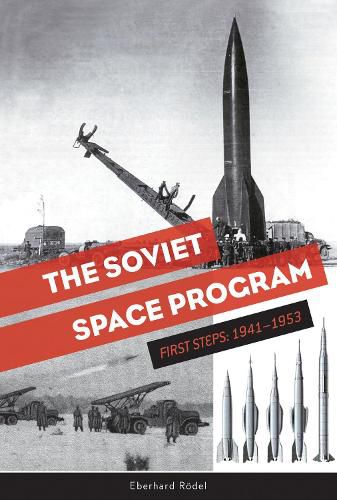Readings Newsletter
Become a Readings Member to make your shopping experience even easier.
Sign in or sign up for free!
You’re not far away from qualifying for FREE standard shipping within Australia
You’ve qualified for FREE standard shipping within Australia
The cart is loading…






This concise history is the first book in a new series on the Soviet space program, and features many rare photographs, diagrams, and charts. When Soviet rocket experts examined the first Nazi V-2s in early 1945, they immediately realised that their own technology was years behind what the Germans had developed. The dropping of the two American atomic bombs on Hiroshima and Nagasaki in August 1945 made the path forward clear: the development of a Soviet atomic bomb, and a suitable missile to carry it. This story begins with the Soviet’s pre- and early war developments in rocket technology, then covers the discovery and study of the V-2s at Peenemunde, Germany. The Soviets assembled remaining V-2 rockets from existing parts and their mode of operation was studied. Developments in the Soviet R and G series missiles in the early 1950s are discussed in detail, as is the development for the peaceful use of Soviet rocket technology in space. AUTHOR: Eberhard Rodel is a specialist in the history of Russian spaceflight. He maintains good contacts in the Russian spaceflight scene. SELLING POINTS: . First volume in a new series on the Soviet space program . Covers the crucial, and rarely known, early years of 1941 1953 . Soviet R and G series missiles in the early 1950s discussed in detail 207 colour and b/w photographs
$9.00 standard shipping within Australia
FREE standard shipping within Australia for orders over $100.00
Express & International shipping calculated at checkout
Stock availability can be subject to change without notice. We recommend calling the shop or contacting our online team to check availability of low stock items. Please see our Shopping Online page for more details.
This concise history is the first book in a new series on the Soviet space program, and features many rare photographs, diagrams, and charts. When Soviet rocket experts examined the first Nazi V-2s in early 1945, they immediately realised that their own technology was years behind what the Germans had developed. The dropping of the two American atomic bombs on Hiroshima and Nagasaki in August 1945 made the path forward clear: the development of a Soviet atomic bomb, and a suitable missile to carry it. This story begins with the Soviet’s pre- and early war developments in rocket technology, then covers the discovery and study of the V-2s at Peenemunde, Germany. The Soviets assembled remaining V-2 rockets from existing parts and their mode of operation was studied. Developments in the Soviet R and G series missiles in the early 1950s are discussed in detail, as is the development for the peaceful use of Soviet rocket technology in space. AUTHOR: Eberhard Rodel is a specialist in the history of Russian spaceflight. He maintains good contacts in the Russian spaceflight scene. SELLING POINTS: . First volume in a new series on the Soviet space program . Covers the crucial, and rarely known, early years of 1941 1953 . Soviet R and G series missiles in the early 1950s discussed in detail 207 colour and b/w photographs